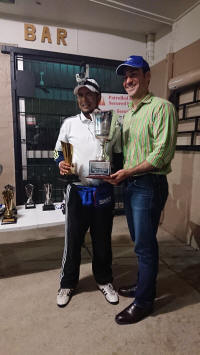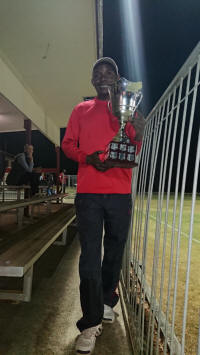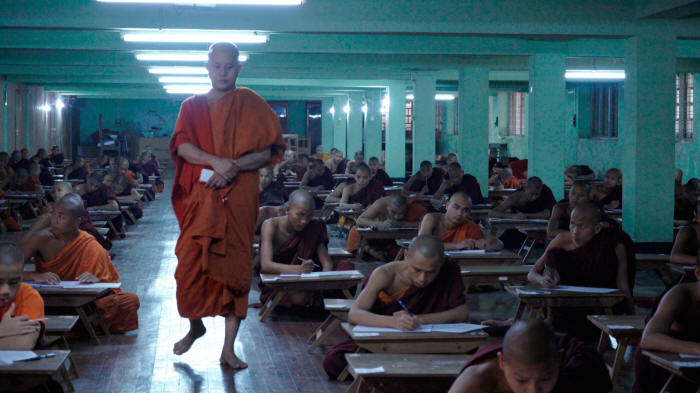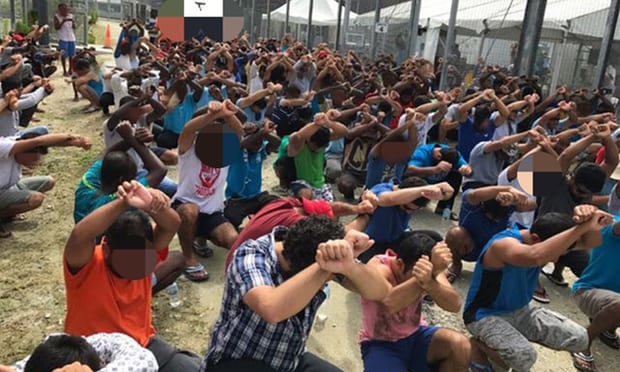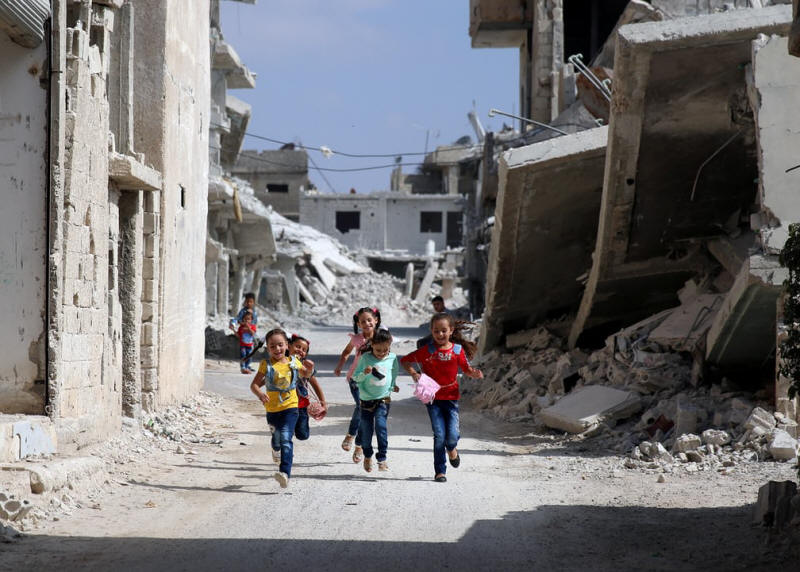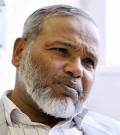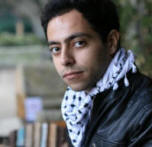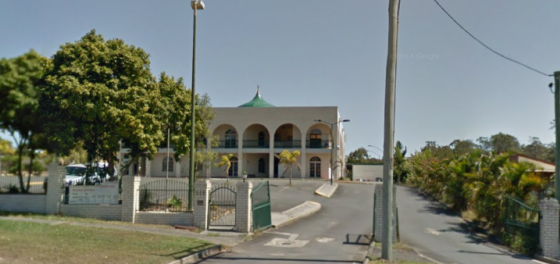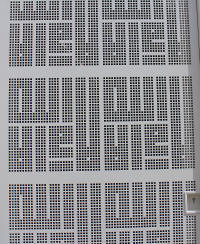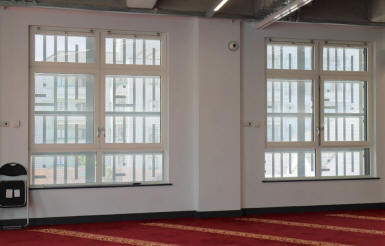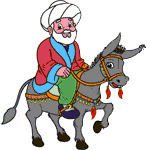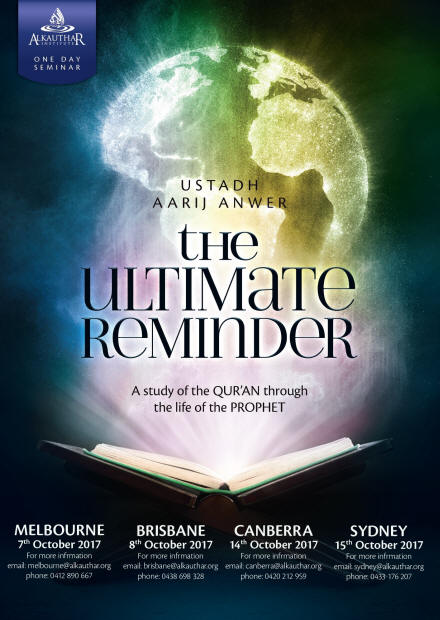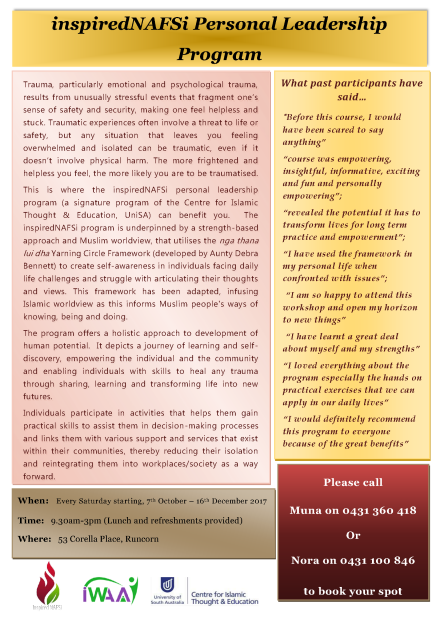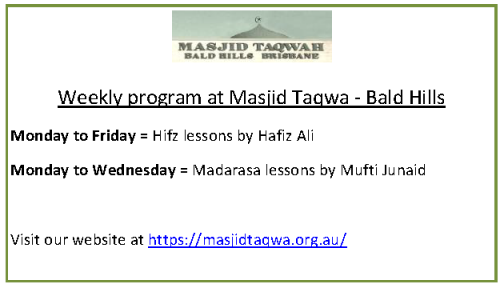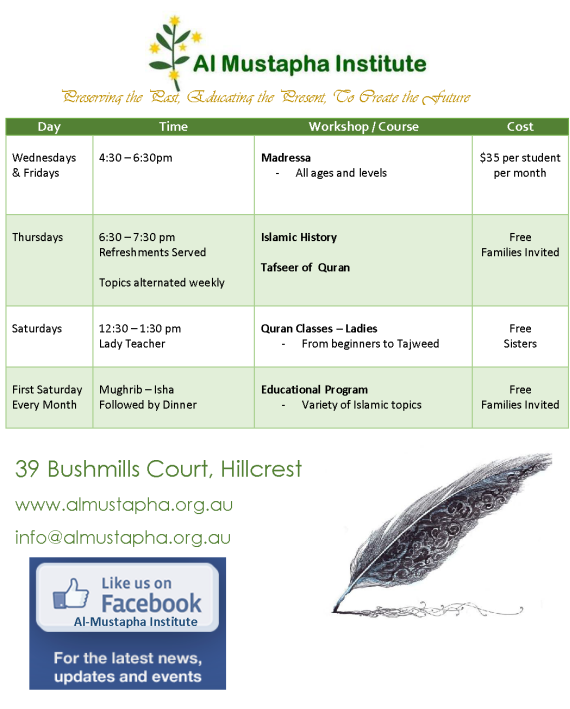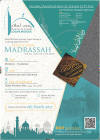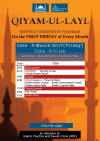|
Ma Soe Yein is the largest
Buddhist monastery in
Mandalay, Myanmar. A dreary
sprawl of dormitories and
classrooms, it is located in
the western half of the
city, and accommodates some
2,500 monks. The atmosphere
inside is one of quiet
industry. Young men, clad in
orange and maroon robes, sit
on the floors and study the
Dharma or memorize ritual
texts. There is little noise
except for the endless
scraping of straw brooms on
wooden floors, or the
dissonant hum of people in
collective prayer. Outside,
the scene is livelier. Monks
hurriedly douse themselves
with cold water, and chat
politics over a table of
newspapers. They do so in
the shadow of a large wall
covered with gruesome images
depicting the alleged
bloodlust of Islam.
Photographs, displayed
without any explanation or
evidence of their origins,
show beaten faces, hacked
bodies, and severed
limbs—brutalities apparently
committed by Muslims against
Myanmar Buddhists.
The contrast between the
monastery’s inner calm and
this exterior display of
violence is a fitting
inversion of Ma Soe Yein’s
most infamous resident,
Ashin Wirathu, the subject
of Barbet Schroeder’s new
documentary, The Venerable
W. On the outside, Wirathu
is composed and polite, with
large brown eyes and a
sweet, impish grin. His
voice is smooth and its
cadence measured. Yet
beneath this civil disguise
seethes an interminable
hatred toward the 4 percent
of Myanmar’s population that
is Muslim (the wall of
carnage stands outside his
residence). Wirathu is
responsible for inciting
some of the worst acts of
ethnic violence in the
country’s recent history,
and was described by Time as
“The Face of Buddhist
Terror.”
|
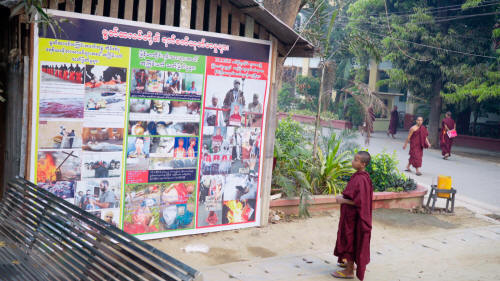
A wall covered with images
depicting the alleged bloodlust
of Islam at the Ma Soe Yein
Buddhist monastery, from The
Venerable W., 2017 |
Schroeder, an Iranian-born
Swiss filmmaker, has spent
decades documenting the
morally despicable. His
“Trilogy of Evil” began in
1974 with General Idi Amin
Dada: A Self Portrait, a
character study of the
Ugandan dictator. The second
installment, Terror’s
Advocate (2007), was on the
French-Algerian defense
lawyer Jacques Vergčs, whose
clients have included Klaus
Barbie, Carlos the Jackal,
the Khmer Rouge leader Khieu
Samphan, and the Holocaust
denier Roger Garaudy.
Wirathu is Schroeder’s final
subject, and, for him, the
most terrifying. “I am
afraid to call him Wirathu
because even his name scares
me,” he said in a recent
interview with Agence
France-Presse. “I just call
him W.”
The film charts Wirathu’s
rise from provincial
irrelevance in Kyaukse to
nationwide rabble-rouser. It
centers on the crucial
moments of his budding
ethno-nationalism, such as
in 1997, when he says his
eyes were “finally opened”
to the “Muslims’ intentions”
after reading a pamphlet
entitled In Fear of Our Race
Disappearing, which appeared
in print by an unknown
author; or 2003, when he
delivered a chilling
sermon—caught on
camera—against Muslim
“kalars” (kalar is the
equivalent of “nigger”). “I
can’t stand what they do to
us,” he says to rapturous
applause. “As soon as I give
the signal, get ready to
follow me…I need to plan the
operation well, like the CIA
or Mossad, for it to be
effective…I will make sure
they will have no place to
live.” One month later, in
Kyaukse, eleven Muslims were
killed, and two mosques and
twenty-six houses were
burned to the ground.
Wirathu was arrested by the
military junta for inciting
violence, and spent nine
years in Mandalay’s Obo
prison.
|
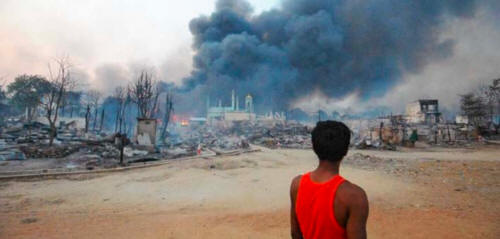
The remains of a mosque in
Meiktila, central Burma, after
the March 2013 anti-Islamic
riots, from The Venerable W.,
2017 |
Like Marcel Ophüls, a
filmmaker who explored the
quotidian aspects of
intolerance and oppression,
Schroeder’s interviewing
style is never hostile or
moralistic. As he writes in
the notes to the film, the
point is to let the subjects
speak, “without judging
them, and in the process
evil can emerge under many
different forms, and the
horror or the truth comes
out progressively, all by
itself.” In one instance,
Wirathu bares the depths of
his self-regard when he
claims to have been the
inspiration for the Saffron
Revolution of 2007—a
delusion scorned in the film
by one of its leaders, U.
Kaylar Sa, who describes the
desperate social conditions
that forced the monks onto
the streets of Rangoon.
Wirathu was freed as part of
a general amnesty for
political prisoners in 2012,
and he quickly went on to
revitalize the 969
Movement—a grassroots
organization founded earlier
that year by Wirathu and
Ashin Sada Ma, a monk from
Moulmein, and committed to
preventing what it sees as
Islam’s infiltration of, and
dominance over, Buddhist
Myanmar. Since 2014, Wirathu
has operated under the
auspices of the Ma Ba Tha,
or Organization for the
Protection of Race and
Religion. Like 969, many
members of the Ma Ba Tha
spread propaganda about how
Muslims steal Buddhist women
and outbreed Buddhist men.
“The features of the African
catfish,” Wirathu tells
Schroeder near the beginning
of the film, “are that they
grow very fast, they breed
very fast, and they’re
violent…The Muslims are
exactly like these fish.”
W. is tougher viewing than
its predecessors. Archival
material and scenes
Schroeder filmed undercover
are spliced with footage
from YouTube and Facebook
captured on camera phones
and personal video
recorders. Most of this
documents atrocities
committed in Rakhine state
in 2012—when clashes between
ethnic Arakanese and
Rohingya Muslims forced
125,000 of the latter into
displacement camps—and
anti-Muslim riots in central
and eastern Myanmar in 2013.
There are graphic images of
burning homes, men beaten to
death with wooden clubs, and
people left to burn alive.
All the while state police
stand back and let it
happen—Amartya Sen has
called the violence
committed against the
Rohingya a “slow genocide.”
Using video uploaded to
YouTube and Facebook helps
convey one of Schroeder’s
most important points about
Wirathu. What was
frightening about Idi Amin
was his combination of
absolute power and
volatility, a man whose
dormant rage erupted without
warning. With Jacques Vergčs,
it was his gifts of
seduction and dexterity of
logic that made him
something like Woland from
Bulgakov’s The Master and
Margarita—a Devil with
impeccable tailoring. What’s
disturbing about Wirathu is
how, as one anti-Wirathu
monk puts it, he wants
people to “experience his
words before accepting
them.” The aim of his public
sermonizing is to transform
the impressionable into
unthinking agents of his
intolerance, which accounts
not only for his
call-and-response style of
preaching, and the fact
that, as the film shows, he
regularly instructs
children, but also for his
extensive use of Twitter and
Facebook, and the
Islamophobic
DVDs he produces and
distributes throughout the
country. Like his favorite
politician, Donald Trump—the
only presidential candidate,
he says in the film, who
will prevent Islam’s global
domination—Wirathu both
channels and reflects the
ways in which social media
has transformed hate into a
thoughtless pastime. His
evil, an attempt to deepen
and normalize the mores of
racial enmity, might be
encapsulated by a line from
Byron, which serves as an
epigraph to the film: “Now
hatred is by far the longest
pleasure;/ men love in
haste, but they detest at
leisure.”
This is an important
documentary that not only
illuminates the rank
underbelly of Theravada
Buddhism in Myanmar, but
also captures one of the
first major tests faced by
the new political order,
especially regarding freedom
of speech and assembly.
Wirathu is a thorn in the
side of a Suu Kyi government
that is trying to end a near
seventy-year civil war and
rebuild the country after
decades of economic
catastrophe. A question many
of those in government must
surely (hopefully?) be
asking is, “Who will rid us
of this turbulent priest?”
In the short term, it is
unlikely to be the monks
themselves. Although
Myanmar’s official Buddhist
authority—the Ma Ha Na—has
banned the Ma Ba Tha from
using its full Burmese name,
it has not addressed the
group’s discriminatory aims
and activities. This is
partly to do with the
widespread support enjoyed
by the Ma Ba Tha, which
builds Sunday schools,
provides legal aid, and
raises money for charities.
The state of race relations
in Myanmar is far more
complex than Schroeder’s
film allows. It is not
uncommon to hear members of
the Bamar majority say they
“hate Islam” but, when
pressed, admit they have no
issue with Muslims living in
their towns. One of the
film’s other blind spots is
the military. Aside from a
brief glance at the mass
population shifts between
Rakhine and Bangladesh in
the late 1970s, there is
very little on how the army
had been inciting ethnic
violence in places like
Rakhine long before Wirathu
appeared, nor is there any
mention of a popular theory
that Wirathu is paid, or at
least encouraged, by senior
generals, some of whom are
often photographed at his
monastery. In this lack of a
deeper historical setting,
and the argument that the
film could have gone further
to expose the involvement of
the military in ethnic
violence, Schroeder’s film
resembles Joshua
Oppenheimer’s harrowing
documentary The Act of
Killing (2012), which
examines former members of
the Indonesian death-squads
responsible for the mass
killing of communists
between 1965-1966.
A greater problem with The
Venerable W., and the
“Trilogy of Evil” as a
whole, is how Schroeder
assumes evil to be a given
in the world. He is the
filmmaker’s Kolakowski,
someone who believes evil
isn’t rooted in social
circumstance, but is a
permanent feature of the
human condition. Only the
concept of “evil” can
capture the immoral
extremities reached by
figures like Amin, Vergčs,
and Wirathu. But there is
little sense in W., or in
the other two films, of
evil’s potential origins, or
how Wirathu’s ideas may have
formed and why they are
admired in places like
Maungdaw in Rakhine, where
there has been historical
tension between Muslims and
Buddhists, but less so in
Yangon or Mandalay, where
there has not. Imploring us
to think of evil without
considering what it means
does little to illuminate
the darker side of human
behavior. As the American
clergyman William Sloane
Coffin put it: “Nothing is
easier than to denounce the
evildoer, and nothing is
more difficult than to
understand him.”
Barbet Schroeder’s The
Venerable W. is playing at
Telluride Film Festival
(September 1 through 4),
October 13 and 14 at the New
York Film Festival, and
October 13 and 15 at the
Mill Valley Film Festival.
Source:
NYBooks
|



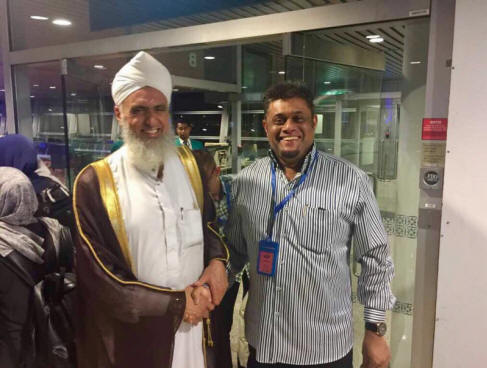
 Leaders
of the Australian Federation
of Islamic Councils, also
known as AFIC, have drafted
an extraordinary letter to
Turkish President Recap
Tayyip Erdogan.
Leaders
of the Australian Federation
of Islamic Councils, also
known as AFIC, have drafted
an extraordinary letter to
Turkish President Recap
Tayyip Erdogan.
